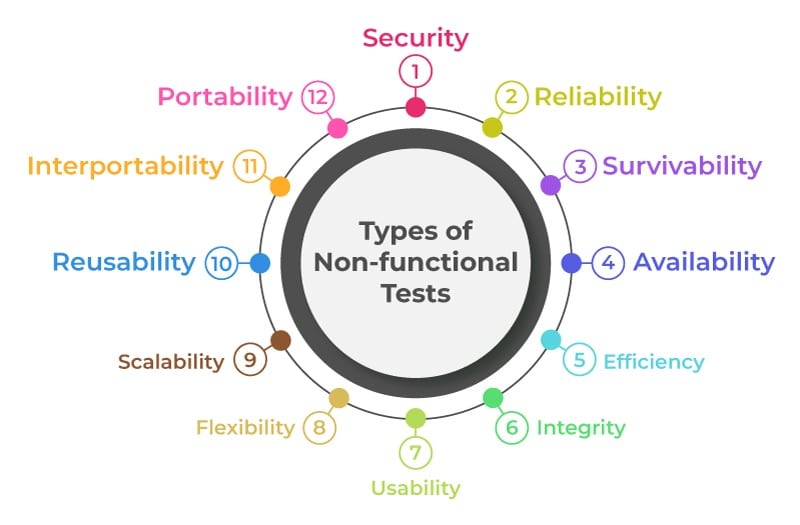7 Testing Approaches for Reliable Fintech Software Performance
Fintech software performance is the engine that powers the smooth transactions you’re accustomed to. This is not only about speed, but also about dependability and security.
You must determine whether your program can manage large numbers of transactions simultaneously without crashing or slowing down. It is about maintaining the integrity of financial data and protecting it from cyber threats.
You should also understand how your software interacts with other systems. Does it integrate smoothly? Can it adjust to changes in these systems without causing disruptions? These are essential questions that you must answer.
Recognizing these aspects will assist you in creating and maintaining a high-performing financial application that fulfills your users’ expectations.

Key Takeaways:
- Comprehensive testing ensures software reliability, security, and performance.
- Functional testing validates that software features work as intended.
- Non-functional testing examines software behavior under different conditions.
- Security testing safeguards against cyber threats and ensures compliance.
- Automation testing increases efficiency, accuracy, and coverage.
The Importance of Testing in Fintech
To ensure that your financial software performs optimally, comprehensive testing is a non-negotiable stage that you cannot afford to neglect. Without it, you are taking a significant risk.
Undetected defects or malfunctions can jeopardize software security, result in a poor user experience, and, eventually, a loss of customer confidence.
In the competitive world of fintech, trust is your currency. Customers commit their financial information and actions to your program, and they demand nothing less than complete reliability.
Testing is a key element of the fintech software development services process because it ensures that your program satisfies these standards. It ensures that every feature works as intended, that the software is resistant to crashes and malfunctions, and that it complies with all applicable regulations.
Functional Testing Approach
Functional testing ensures that your software performs as expected, offering clients seamless transactions and services. To get the most out of functional testing, consider the following key points:
- Carefully define the input and expected output for each test case.
- Execute tests under varying conditions to validate software robustness.
- Prioritize features and functions based on usage and impact.
- Regularly update test cases to match software updates.
- Utilize automation where possible to increase testing efficiency and coverage.
Non-functional Testing Approach

Non-functional testing is vital for assessing aspects like reliability, scalability, and performance under heavy load. This approach examines how your software behaves in different conditions.
It’s not about what your software does, but how it does it. You’ll want to ensure that your software can handle high traffic volumes, that it’s responsive even under peak load, and that it maintains stability over time.
You might also want to check its usability, making sure it’s user-friendly and intuitive.
Security Testing for Fintech
Security testing is a critical safeguard for securing your fintech platforms and ensuring customer trust. Consider these five key areas in security testing:
- Intrusion Detection – Spot unauthorized activity quickly.
- Identity Verification – Confirm user identities to prevent fraudulent access.
- Encryption Testing – Ensure sensitive data is properly encrypted.
- Penetration Testing – Identify potential attack points and fix them.
- Compliance Verification – Stay up-to-date with regulatory standards in fintech security.
Performance Testing Strategy
This strategy should identify key performance indicators (KPIs), such as response time, throughput, and resource utilization. You’ll need to set baseline standards for these KPIs to benchmark the software’s performance.
Also, consider the varying loads your software might encounter. Simulate these conditions to test the software’s response. It’s also crucial to regularly monitor and adjust the strategy based on the software’s performance over time. A proactive approach helps you spot potential issues before they escalate.
Usability Testing Methods
Here are five key methods:
- Hallway Testing: You’ll recruit random individuals, often from within your organization, to test the software. They’ll provide fresh eyes and unbiased feedback.
- Remote Usability Testing: This allows users from different locations to test your software, providing diverse insights.
- Contextual Inquiry: Here, you’ll observe users in their natural environment to understand how they interact with your software.
- Heuristic Evaluation: This method involves experts who evaluate your software based on established usability principles.
- User Interviews: Direct conversations with users can provide deep insights into their experience and expectations.
Regression Testing in Fintech

The regression testing method involves re-running functional and non-functional tests to verify that previously developed and tested software still performs after a change. If a recent update or modification causes a previously working feature to fail, that’s a regression.
Frequent updates are common in the fast-paced fintech landscape, making regression testing crucial. It ensures your software remains reliable after each change, keeping your customer’s trust intact.
Although it might seem time-consuming, skipping this step can lead to severe issues down the line. So, always make sure to include regression testing in your fintech software development process.
Automation Testing for Consistency
Automation testing is a time-saving, reliable method that allows you to validate the quality and consistency of software effectively and efficiently.
Consider the following benefits of automation testing:
- Efficiency – Automated tests run faster than manual ones.
- Reusability – Once created, you can reuse automated test scripts across different projects.
- Accuracy – Automated tests eliminate human error.
- Coverage – They allow for more extensive testing, covering all possible combinations.
- Speed – Rapid feedback on the quality of software helps you make adjustments swiftly.
Conclusion
Ensuring that your finance software runs properly is not an option, but a requirement. Comprehensive testing methods, as previously said, are critical for ensuring software reliability, security, and peak performance.
Functional and non-functional testing, as well as regression and automation testing, all play important roles in validating various aspects of your product.
Integrating these testing approaches not only improves the software’s robustness and user experience but also protects client trust, which is a crucial commodity in fintech.
A proactive, rigorously designed, and constantly updated testing routine will keep you ahead of the competition, guaranteeing that your fintech application is durable under changing conditions and constant changes.
FAQs
What is performance testing and types of performance testing?
Performance testing evaluates the speed, responsiveness, and stability of a software application under a specific workload. Types include Load Testing, Stress Testing, Endurance Testing, Spike Testing, Volume Testing, and Scalability Testing.
How to test the performance of a fintech software?
- Define performance criteria. Understand key performance indicators (KPIs) such as response time, throughput, and resource utilization.
- Design test scenarios. Create realistic user scenarios that reflect actual usage patterns.
- Use performance testing tools. Employ tools like JMeter, LoadRunner, or Gatling.
- Generate load. Simulate multiple users to access the system concurrently.
- Monitor and analyze. Use monitoring tools to gather data and analyze results.
- Optimize. Identify bottlenecks and optimize code or infrastructure.
What is the difference between QA testing and performance testing?
QA testing ensures the software works as intended, focusing on functional correctness, usability, and security. It includes methods like manual testing, automated testing, and regression testing.
Performance testing focuses on how the software performs under various conditions, evaluating speed, scalability, and stability. It includes methods like load testing.
- How to Boost Your Casino Site’s Visibility with SEO - July 18, 2025
- What Makes Onboarding Workflow Software Effective for New Hire Processes? - February 11, 2025
- The Best Tools for SEO Analysis and Optimization - July 31, 2024
Where Should We Send
Your WordPress Deals & Discounts?
Subscribe to Our Newsletter and Get Your First Deal Delivered Instant to Your Email Inbox.



